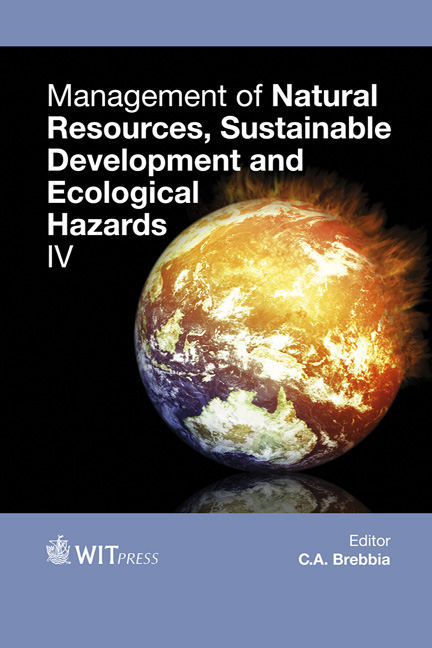Air Quality And Climate Change In Small States Of The Commonwealth: Jamaica And Namibia
Price
Free (open access)
Transaction
Volume
199
Pages
12
Page Range
97 - 108
Published
2015
Size
863 kb
Paper DOI
10.2495/RAV150091
Copyright
WIT Press
Author(s)
N. Kgabi, L. Nampadhi, J. Williams, O. Hamilton, J. Antoine, J. Preston, C. Grant
Abstract
Most air quality studies conducted in small states of the Commonwealth including Jamaica and Namibia do not address the interaction between the two main pollutants (particulate matter and tropospheric ozone), as well as their relationship with climate change. Total suspended particulates (TSP) and tropospheric ozone were measured in Windhoek, Namibia; while only TSP was measured in Kingston, Jamaica. The observed concentrations were used together with secondary data and/or calculations of atmospheric conditions like mixing height, temperature, wind speed, relative humidity, solar radiation, and ventilation rates to determine the PM-Ozone interactions and possible relationship with climate change. The TSP concentrations were high in Kingston than in Windhoek. The ozone concentrations in Windhoek were relatively low (10 to 35 ppb). The atmospheric pollutant interactions were observed as in order of relative abundance as Kingston>Windhoek for TSP, relative humidity, mixing height, and ventilation rate; and Windhoek>Kingston for solar radiation. The morphology of particulates also showed the effect of daily activities of the domestic, traffic and industrial sectors to air quality and ultimately climate, and which need to change for realization of reduced pollution and climate effect. The particulate-ozone interactions during ozone and smog formation can, depending on the source and type of aerosols, give an indication of the contribution to climate variability.
Keywords
particulate matter, tropospheric ozone, climate change, meteorological parameters, atmospheric conditions, Jamaica, Namibia





